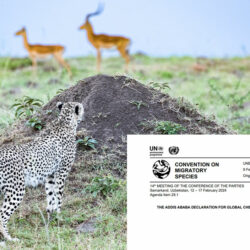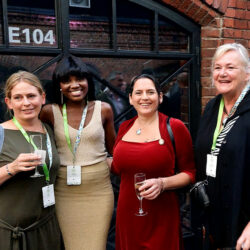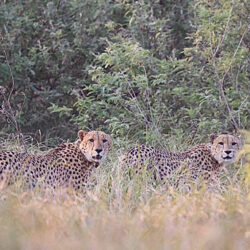Guest Blog – Pathways Africa Conference
-

- by Mike Chedester January 31, 2018
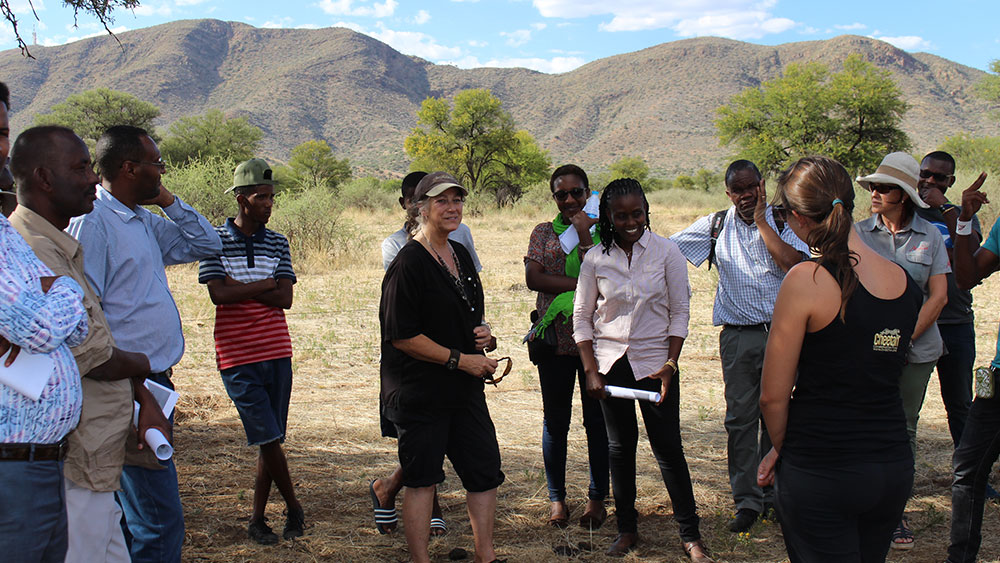
After a 30 hour journey through Airports and daunting security checks, I arrived in Windhoek, Namibia for the Pathways Africa Conference. Pathways is a conference and training program designed to address the myriad of issues that arise as people and wildlife struggle to coexist in a sustainable and healthy manner. I was invited by Dr. Laurie Marker, founding director of CCF Cheetah Conservation Fund, to help facilitate the workshop as part of my Association of Zoos and Aquariums (AZA) – Saving Animals From Extinction (SAFE) cheetah public engagement responsibilities. The Pathways Africa 2018 conference and workshop was a critical wildlife conservation effort, with participates coming from all over the world. Participants represented 12 African countries including Namibia, Algeria, Benin, Botswana, Ethiopia, Kenya, Rwanda, South Africa, Somaliland, Tanzania, Uganda, Zambia and several other African Nations. The mission of the conference was to increase professionalism and effectiveness in the human dimensions of fisheries and wildlife management field.
Pathways Africa was developed to set the precedent for future research, innovation, and collaboration and also to further the application of research in the field of human dimensions of wildlife management in sub-Saharan Africa and beyond.
The conference is important for conservation efforts in Africa, where so many innovative and interesting wildlife management projects are based. Pathways Africa in Windhoek, Namibia featured visionary Wildlife managers, leaders in conservation policy, and the students and academics that are forging new frontiers.
Pathways Africa (Namibia) included a training workshop (3-day hands-on training with immersion) that provided a unique and valuable opportunity for practitioners to exchange ideas and build their human dimensions tool box. Training participants attended skill building sessions focused on community-based conservation and monitoring, education, human-wildlife conflict mitigation, communication, and more. The hands-on portion was immediately followed by the Pathways Africa Conference where trainees had the opportunity to present. The interactions provided them with excellent examples of the breadth and depth of human dimensions research and application as well as networking opportunities.
Dr. Marker and the team from Colorado State University assembled a team of volunteers to coordinate the proceedings. I was happy to be one of the people who helped prepare the meeting rooms, stuffed swag bags, organized registration and greeted the training attendees.
On day two of the conference:
We visited Krumhun farms owned by Ulf-Dieter Voight, whose family have been cattle farmers since 1909. In 1996 he changed Krumhuk to biodynamic farming with their community developing different production lines and processing their own produce. From dairy products, honey, sunflower oil and many other pure organic products. The farm is located in a mountainous terrain which is a prime spot for predators like the cheetah, leopard, jackal, and caracal, which creates human wildlife conflict. In order to improve rangeland management, prevent losses to predators, and to build a better relationship between cattle and humans, many aspects of livestock management have been incorporated into their farming practice including herding and the use of a Livestock Guarding Dog (LGD) supplied by CCF. In fact, this is the first LGD placed to protect cattle in Namibia. In the past years, the farm would lose on an average of 40 calves per year to predators. This past year only two calves were taken, making this a very successful investment in the dog. Ulf told our group the dog and young cattle and calves have bonded nicely, some of the older cattle are still a bit wary of its presence with the herd.
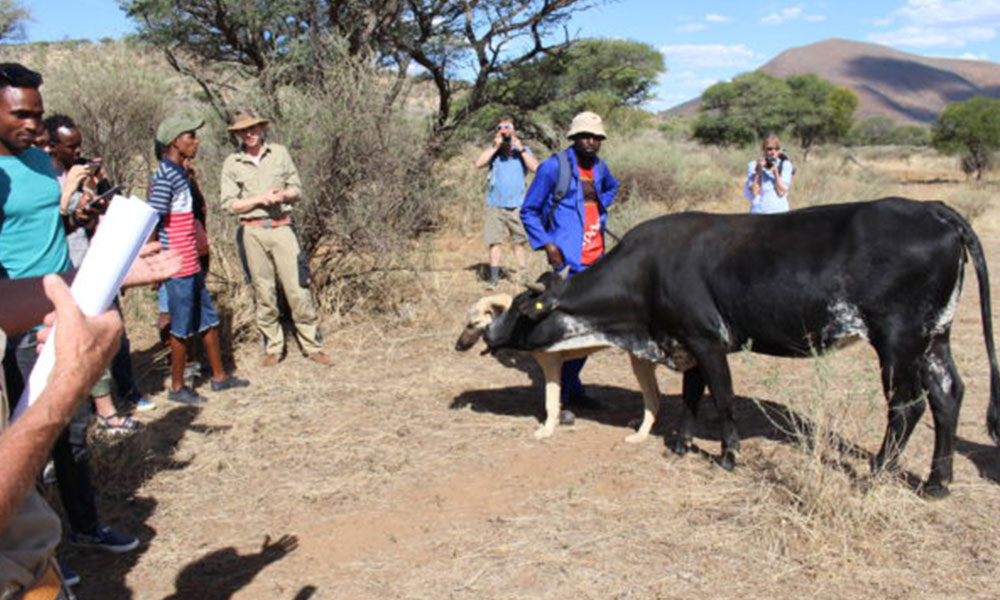
Dr. Morgan Hauptfleisch, professor of Wildlife and Environmental Science at the Namibia University of Science and technology, lead our group in a field research and observation activity and discussion of the rangeland. We broke into groups of 5 and walk, answering questions noticeable ecological problems, conditions of the grazing, browse and signs and tracks of animals utilizing the rangeland.
It was determined that wildlife and livestock rangeland conditions are difficult to manage. By understanding grazing systems conditions, invasive species, drought patterns, soil type and other factors, helps with the successful management of Ulf’s farm.
The discussion that followed included a Q&A session. The questions were very diverse as a lot of participants were from African nations that have a much higher than average precipitation rate, unlike the savannahs of Namibia.
Day three of the conference:
Began with a light rain falling on Windhoek. After a hearty breakfast at 6:30 am we attended another full day of conservation training. The first presenter was Kelly Stoner, associate Conservation Scientist with the Wildlife Conservation Society, who talked about Land Tenure and Management. Kelly is leading WCS’s Bison Program in Montana in the effort to restore wild, free-ranging bison to tribal lands. Kelly’s work has focused on human-wildlife conflict, applied conservation research, and strategic communication and has taken her to Tanzania, Botswana
and Namibia.
Kelly started with an introduction of the structure and maintenance of Namibia’s communal conservancy system. The many representatives from all across Africa consistently talked about the differences and challenges facing the national parks and conservancies in their countries. I found it fascinating when we were shown a map representing the overlap of who uses the lands (private, communal and state owned) for farming, grazing, and recreation. This illustrated to me that not only were there challenges between humans and wildlife in land usage but also between human communities themselves. The challenges of shared spaces differed from country to country, and were amplified in countries with political unrest.
Up next, was a session on Human-Wildlife Conflict (HWC), presented by Dr. Kate Hill, Lecture, Oxford Brookes University and co-presented by Gaba Fleury, Human Dimension Research Manager from CCF. Kate is working on a new International Union for Conservation of Nature (IUCN) Species Survival Commission (SSC) Task Force on Human-Wildlife Task Conflicts. HWC is one of the primary threats to the health of ecosystems and the livelihoods of the humans living within them. The training provided an overview of HWC and how it has evolved over time and outlined the complex social and technical aspects of this multifaceted issue. What I enjoyed most from the session was a group interactive case study activity. We were given a HWC scenario, and character profile of a park warden, community leaders, game guards, famers, an external expert, and a donor agency representative. It was a great activity and was very helpful in illustrating the intricacies involved in mitigating HWC.
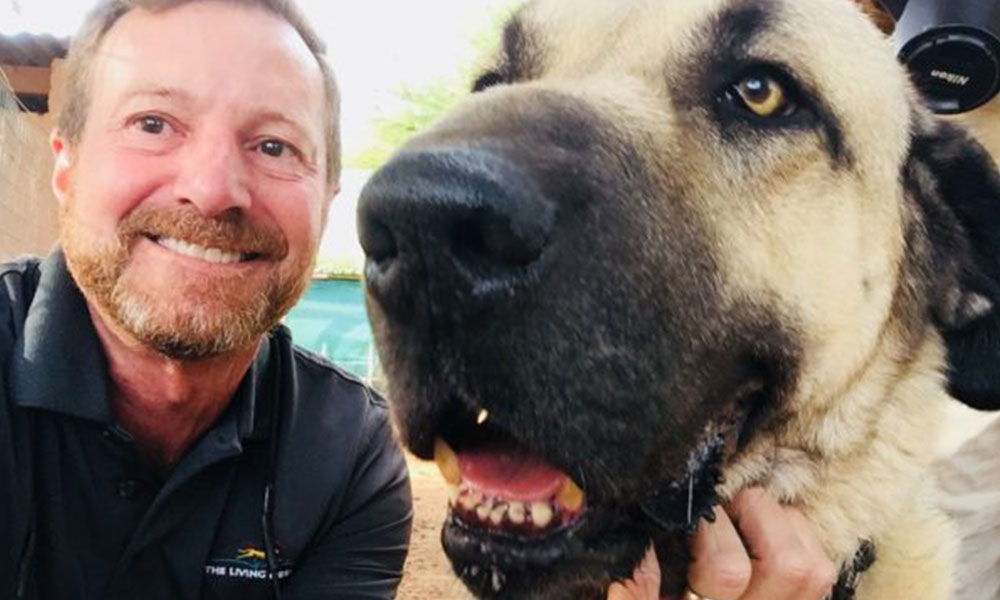
The training concluded with a 8-9 pm session on Illegal Wildlife Trade (IWT). This training was one of the most useful for my job as AZA SAFE Public Engagement coordinator. It was presented by Patricia Tricorache, CCF’s Assistant Director of Illegal Wildlife Trade. Wildlife crime is a big business, generating 40 billion USD per year. From 2008 to 2017, over 1,000 live cheetahs were traded illegally and this is just the data collected and reported by CCF. An overwhelming percentage of the cats are being traded through East Africa, and are headed to the Arabian Peninsula – around 300 per year. For each cheetah that makes it to market in the pet trade, four will die en route.
Social media plays a huge part in illegal pet trade, this year alone, ongoing research by CCF and Project to End Great Ape Slavery (PEGAS) cited that on Instagram alone 390 sellers of wildlife were reported, from 17 countries, with more than 1,300 cheetahs, and more than 300 great apes. Facebook, and Snapchat were also found offering the sale of illegal wildlife and plants and a large percentage of these advertisements are money making scams that use photos of animals from the websites of zoos and aquariums. The session closed with a call to action for all attendees to report any advertisements for IWT to your social media provider, no matter if they are legitimate or scams. Both Facebook and Instagram have agreed to pull all IWT advertisements.
Mike is the Director of Education at The Living Desert
Related Reading
-
February 19, 2024
The Addis Ababa Declaration for Global Cheetah Conservation -
June 2, 2023
Project Cheetah Update

